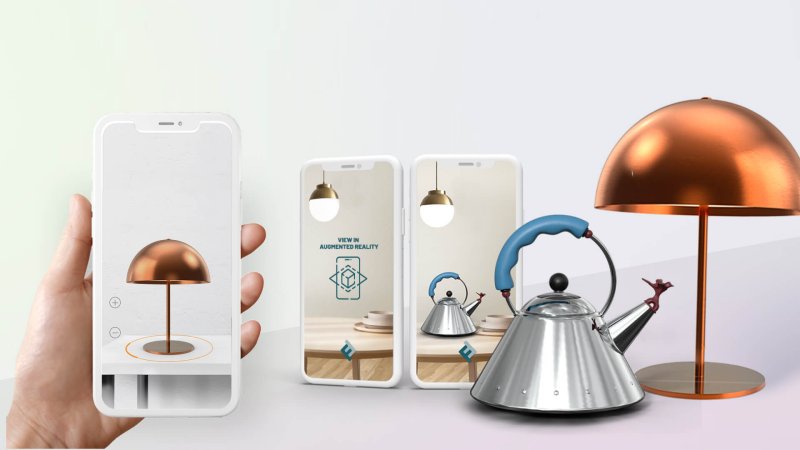
In the relentless pursuit of customer attention and loyalty, businesses operating in the digital sphere face an ever-growing challenge: how to effectively convey the full value and essence of their products in a two-dimensional world. Static images and text descriptions, while foundational, often fall short of replicating the tactile, immersive experience of physical interaction. This engagement deficit is a critical hurdle, leading to higher bounce rates, lower conversion rates, and increased return rates due to unmet expectations.
Enter 3D viewer plugins – a transformative technology rapidly reshaping how products are presented and perceived online. These powerful tools allow customers to interact with digital models of products in a fully immersive, three-dimensional space, offering unprecedented levels of detail, customization, and interactivity. Far beyond simple 360-degree spins, 3D viewer plugins are emerging as a pivotal technology for businesses aiming to dramatically improve product engagement and foster deeper connections with their audience.
The Engagement Deficit: Why Traditional Product Presentation Falls Short
Before delving into the solution, it's crucial to understand the problem. The traditional online product page, characterized by a carousel of static images and bullet-point feature lists, struggles to answer the myriad questions a potential buyer unconsciously asks: "What does it feel like?", "How big is it really?", "Does it come in other colors?", "Can I see it from every angle?", "How do the components fit together?"
This inability to fully visualize and interact with a product creates a cognitive gap. Customers are left to infer, imagine, and sometimes guess, which introduces friction, doubt, and ultimately, hesitation in the purchase journey. For complex products, custom items, or high-value goods, this uncertainty is amplified, leading to abandoned carts and a general lack of confidence in the transaction.
What Are 3D Viewer Plugins? Unlocking True Interactivity
At its core, a 3D viewer plugin is a piece of software (often a JavaScript library or web component) that can be seamlessly integrated into a website or e-commerce platform. Its primary function is to render and display interactive 3D models directly within a web browser, without requiring specialized software or downloads from the user.
Unlike a simple video or a set of photographs, 3D viewer plugins empower users to:
- Rotate and Pan: Freely spin the product to view it from any angle.
- Zoom In/Out: Examine intricate details up close, revealing textures, stitching, or specific components.
- Explode Views: For complex assemblies, disaggregate components to understand internal mechanisms or parts.
- Animations: Showcase product functions, assembly processes, or transformation sequences.
- Material and Color Variations: Instantly switch between different finishes, colors, or fabric options.
- Annotations and Hotspots: Clickable points on the model that reveal detailed information, specifications, or videos about specific features.
- Real-time Configurators: Allow users to customize products, adding or removing features, selecting sizes, or building bespoke items on the fly, with the 3D model updating instantly.
Essentially, they transform a passive viewing experience into an active, hands-on exploration, mimicking the experience of holding the product in a physical store.
The Pillars of Enhanced Engagement with 3D Viewer Plugins
The integration of 3D viewer plugins offers a multitude of benefits that directly translate into improved product engagement:
- Immersive Visualization & Reduced Uncertainty: By allowing customers to manipulate and explore a product in 3D, businesses bridge the gap between the digital and physical. This tactile simulation builds a stronger mental model of the product, fostering confidence and significantly reducing doubts about its appearance, size, or functionality. This directly combats one of the leading causes of online returns: the product not meeting expectations upon arrival.
- Empowered Customization & Personalization: For industries like furniture, fashion, automotive, or manufacturing, 3D configurators are game-changers. Customers can design their perfect product in real-time, seeing changes in materials, colors, or features instantly reflected on the 3D model. This personalization creates a profound sense of ownership and investment even before purchase, dramatically increasing engagement and conversion rates.
- Increased Time on Page & Dwell Time: Interactive content naturally holds user attention for longer. When customers are actively rotating, zooming, and configuring a 3D model, they are spending more time on your product page. This extended dwell time is a strong indicator of interest and intent, positively impacting SEO rankings and signaling to search engines that your content is valuable and engaging.
- Enhanced Storytelling & Product Education: Beyond simple aesthetics, 3D viewer plugins can be powerful educational tools. Exploded views can demystify complex machinery, showcasing internal components and how they interact. Interactive annotations can highlight key features, explain benefits, or provide technical specifications precisely where they matter on the product. This rich, contextual information makes product features more digestible and memorable.
- Improved Brand Perception & Differentiation: Adopting cutting-edge 3D visualization technology positions a brand as innovative, modern, and customer-centric. In a crowded marketplace, offering a superior product viewing experience can be a significant competitive differentiator, leaving a lasting impression on potential customers and fostering brand loyalty.
- Reduced Support Inquiries & Returns: When customers have a clear, comprehensive understanding of a product before purchase, they are less likely to have post-purchase questions or feel the need for returns due to misunderstandings about the product's appearance or features. This reduces operational costs and enhances customer satisfaction.
Key Industries Benefiting from 3D Viewer Plugins:
While applicable across various sectors, some industries are uniquely positioned to reap significant rewards:
- E-commerce (Furniture, Fashion, Jewelry, Electronics): Transforming stagnant product galleries into dynamic, interactive showcases. Customers can "try on" glasses, visualize furniture in their space, or inspect intricate jewelry designs.
- Manufacturing & B2B Sales: Presenting complex machinery, industrial components, or custom parts with exploded views and detailed annotations, simplifying the sales process for technical products.
- Real Estate & Architecture: Offering virtual tours of properties or allowing clients to configure modular building components, helping them visualize spaces and designs more effectively.
- Healthcare & Medical Devices: Showcasing anatomical models, surgical instruments, or rehabilitation equipment with unparalleled clarity for educational purposes or B2B sales.
- Automotive: Allowing customers to customize vehicles with different trims, colors, and features in real-time.
Implementing 3D Viewer Plugins: Considerations for Success
Integrating 3D viewer plugins requires careful planning to maximize impact:
- High-Quality 3D Models: The effectiveness of the plugin hinges on the quality of the underlying 3D models. They must be accurately textured, optimized for web viewing (balancing detail with file size), and professionally rendered.
- Plugin Selection: Choose a plugin that is robust, well-supported, compatible with your existing platform, and offers the specific features (e.g., configurator, annotations) that align with your business needs. Factors like loading speed, mobile responsiveness, and ease of integration are crucial.
- Performance Optimization: Large 3D files can impact page load times. Employ techniques like progressive loading, level of detail (LOD) optimization, and efficient server-side rendering to ensure a smooth user experience, especially on mobile devices.
- User Experience (UX): Ensure the controls for interaction (rotate, zoom, pan) are intuitive and clearly signposted. Don't overwhelm users with too many options; aim for a seamless and enjoyable exploration.
- Analytics: Track how users interact with your 3D models. Which features are most explored? How long do users spend interacting? This data can provide valuable insights for product development and marketing strategies.
The Future is Three-Dimensional
As web technologies advance and customer expectations grow, 3D viewer plugins are no longer a niche luxury but a burgeoning necessity for businesses striving for excellence in digital product presentation. They represent a fundamental shift from passive consumption of information to active engagement and exploration.
By investing in this technology, companies can unlock new levels of product understanding, foster deeper customer connections, reduce purchase friction, and ultimately drive significant growth in an increasingly visual and interactive online landscape. The future of product engagement is undoubtedly three-dimensional, and 3D viewer plugins are leading the charge.







0 Comments
Post Comment
You will need to Login or Register to comment on this post!